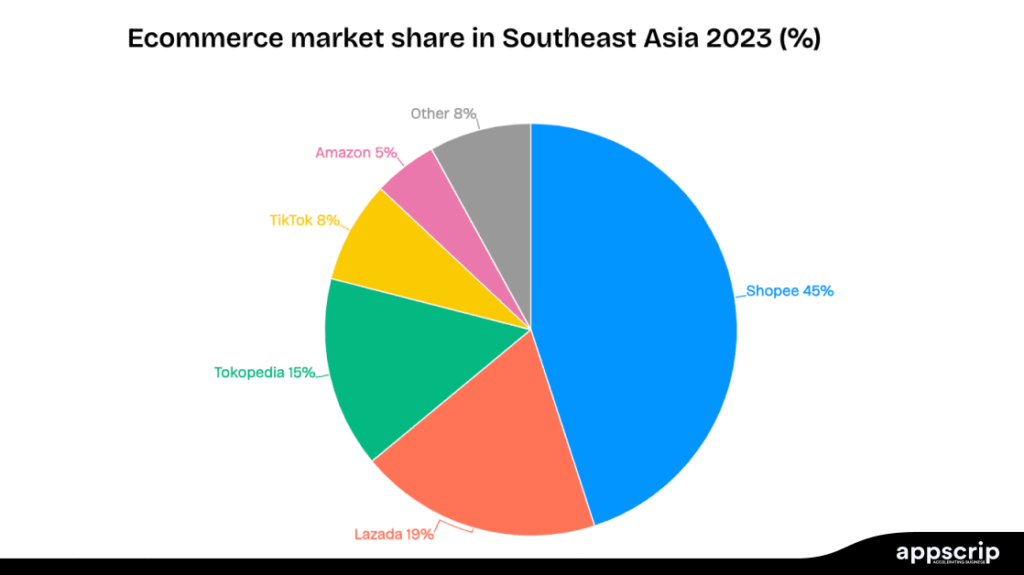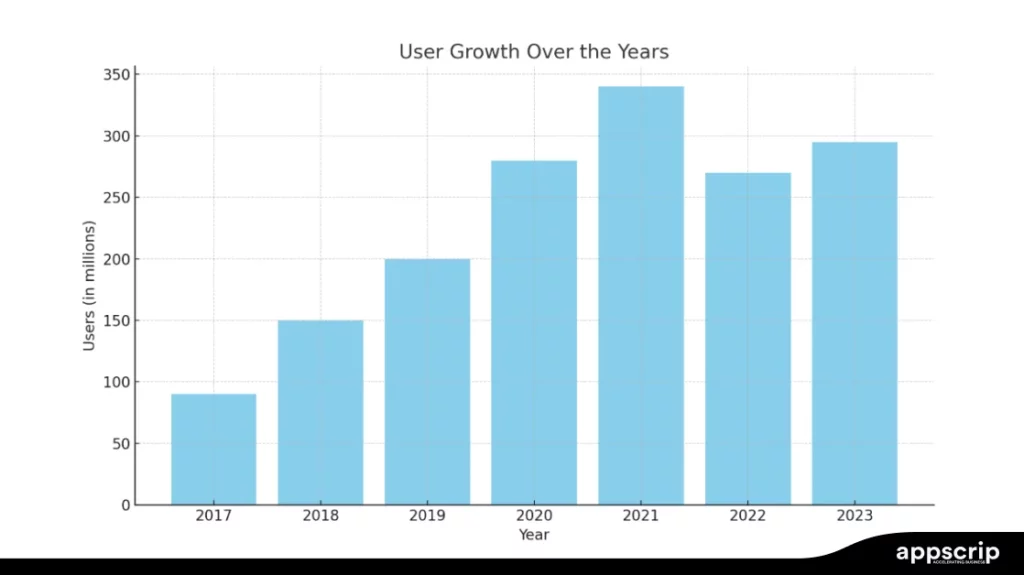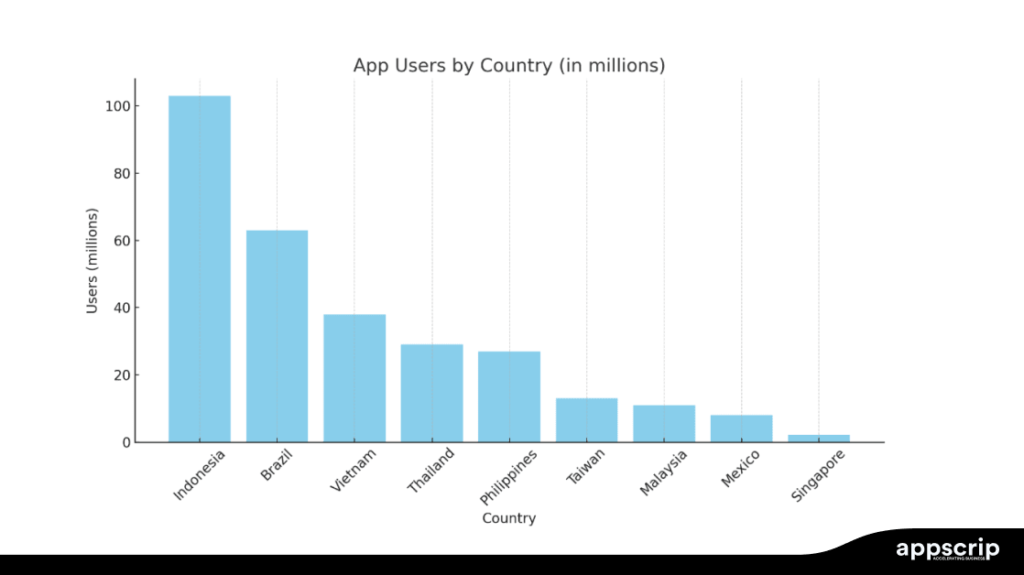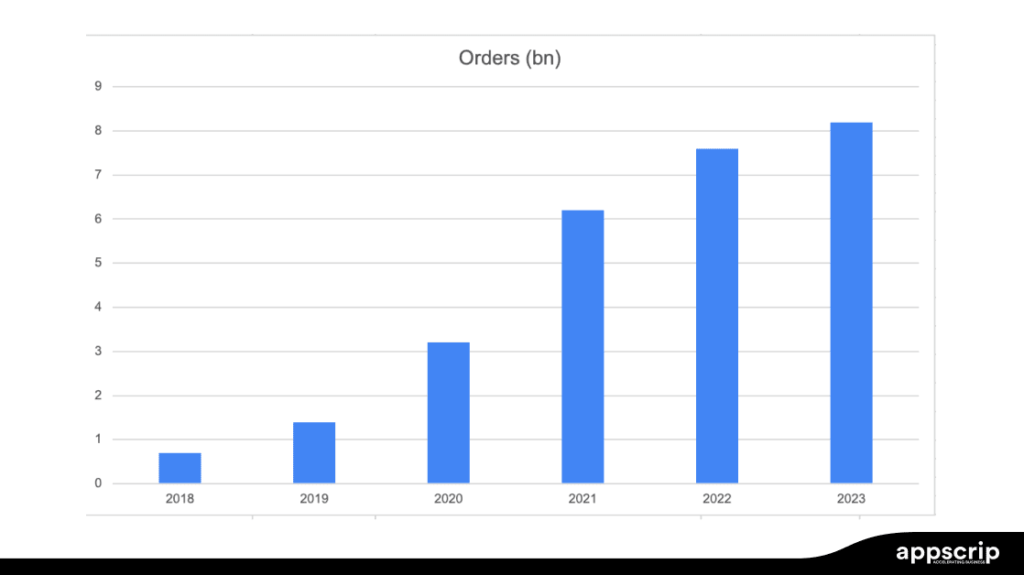Shopee’s rapid growth in Southeast Asia’s eCommerce landscape, hinges on its user-first design, and flawless digital experience it provides. Behind this success is a powerful, scalable tech stack that brings about lightning-fast transactions to personalized recommendations.
Understanding the shopee tech stack not only provides insights into their success but also demystifies the complex workings of modern ecommerce platforms.
For entrepreneurs or businesses, understanding the technology that powers Shopee is engrossing and valuable. This write-up takes you behind the scenes to explore the tools, frameworks, and strategies that Shopee uses to stay agile, innovative, and customer-focused.
TL;DR
Core Technologies
- Frontend:js (UI), Redux (state management), Webpack (bundling), Jest/Enzyme (testing).
- Backend:Python (ML/data analysis), Java (scalable services), PHP (web).
- Databases:MySQL (structured data), Redis (caching), MongoDB (unstructured data).
- Real-Time Processing:Apache Kafka/Spark for live updates, fraud detection, and analytics.
Infrastructure
- Cloud:Hybrid (AWS/GCP/Alibaba Cloud) for global scalability and compliance.
- Edge Computing & CDN:Faster load times via localized data processing.
- Monitoring:Prometheus/Grafana for performance optimization.
Logistics Tech
- AI-powered route optimization, real-time tracking, and warehouse automation.
- Shopee Xpress uses mobile apps for drivers and smart lockers for last-mile efficiency.
Startup Lessons
- Scalability:Microservices, cloud-native tools, and real-time data pipelines.
- Cost-Effective Alternatives:Firebase (analytics), Zoho (inventory), GitHub Actions (CI/CD).
- MVP Approach:Start simple (e.g., basic tracking), then scale with modular upgrades.
Why It Matters: Shopee’s stack balances cutting-edge tech with practicality—offering a blueprint for scalable eCommerce.
Frontend technologies of Shopee Tech Stack
Shopee tech stack employs numerous cutting-edge frontend technologies to deliver a seamless and intuitive shopping experience.
React.js: Shopee uses React.js as its main frontend library. Developed by Facebook, React.js allows developers to create interactive UIs with a component-based architecture, making it easier to develop and maintain complex interfaces. It also offers the Virtual DOM feature, which optimizes rendering and improves app performance.
Redux: Redux is a state management tool used alongside React.js to manage the app’s global state. This comes in handy when dealing with a large application like Shopee where various components need access to shared data.
Webpack: Webpack is a module bundler used by Shopee for its frontend build pipeline. It takes care of bundling the application’s JavaScript files and other assets like CSS and images into a single file, which can be served to the client. It also offers features like hot module replacement, which speeds up development.
Babel: Babel is a JavaScript compiler used by Shopee tech stack to convert ECMAScript 2015+ (ES6+) code into a backwards-compatible version of JavaScript that can run on older browsers. It ensures that the cutting-edge JavaScript features used by Shopee’s developers work across all platforms.
Jest and Enzyme: For testing its frontend code, Shopee uses Jest, a JavaScript testing framework developed by Facebook, along with Enzyme, a testing utility for React.js. Together, these tools allow Shopee to ensure the reliability and stability of its frontend code.
Sass: Shopee also uses Sass, a CSS preprocessor, to write more manageable and reusable stylesheets. It offers features like variables, nesting, and mixins, which help in writing more concise and maintainable CSS.

Ecommerce marketshare in South East Asia
Backend technologies of Shopee Tech Stack
Shopee tech stack comprises an array of backend technologies, each crucial in ensuring seamless operation, high efficiency, and scalability.
Python: Shopee uses Python for machine learning and data analysis tasks, leveraging its simplicity, versatility, and the extensive libraries it offers. Python’s data-focused libraries are instrumental in providing critical business insights and enhancing customer experience through personalized recommendations.
Java: Java is used for backend services, providing robustness and scalability, essential for Shopee’s large user base. Java’s object-oriented programming capabilities facilitate complex computations and data manipulations, ensuring seamless operation of diverse application functionalities.
PHP: Shopee employs PHP for its website due to its simplicity, efficiency, and compatibility with HTML. PHP also supports a wide range of databases, a feature Shopee leverages for its vast data handling needs.
MySQL: MySQL is a relational database management system used by Shopee tech stack for storing, retrieving, and manipulating data, while Redis, an in-memory data structure store, is used for caching and real-time analytics, enabling quicker data retrievals and improved performance.
RabbitMQ: RabbitMQ is used for message queuing, simplifying the communication process between different services, ensuring data consistency, and enhancing fault tolerance.

Infrastructure technologies of Shopee Tech Stack
Data Storage: Shopee uses advanced cloud storage solutions to handle the massive influx of data generated by its users daily. This helps in storing and retrieving data smoothly, making it an integral part of their omnichannel strategy. Cloud storage offers a scalable solution to meet the demands of its growing user base and the increasing volume of data. It ensures data is accessible across different platforms and devices, providing a seamless shopping experience to users.
Compute Capacity: The cloud infrastructure of Shopee provides ample compute capacity to process vast amounts of data. This is critical for executing complex algorithms and machine learning models used to personalize user experiences and streamline operations. It offers the requisite horsepower to handle peak traffic periods like flash sales, thus maintaining platform performance and reliability.
Real-time Data Processing: Shopee tech stack leverages cloud technologies to enable real-time data processing. This is crucial to provide up-to-the-minute inventory updates, real-time pricing adjustments, and instant customer service responses. It helps in maintaining high-speed, low-latency performance, which is essential for an omnichannel strategy. With real-time data processing, Shopee can effectively manage operational complexities and deliver a superior customer experience.
Integrated Tech Stack: Central to Shopee’s cloud infrastructure is an integrated tech stack that creates a unified customer platform. It integrates various technologies to provide a seamless omnichannel experience, addressing the issue of limited integrations in omnichannel solutions. This integration aids in successful supply chain forecasting and inventory optimization.
Basic Data Gathering: Shopee’s cloud infrastructure enables efficient data gathering. By capturing and analyzing customer interactions across numerous touchpoints, Shopee can better understand customer behaviors, preferences, and needs. This information is vital to drive personalized marketing and enhance customer engagement.

Data Management & Storage
Shopee is massive, handling millions of transactions, searches, and users on a daily basis. To keep things working smooth, it relies on an efficient mix of database technologies and advanced data practices.
Databases Used (MySQL, Redis, MongoDB, etc.)
- MySQL is the primary relational database for structured data like product listings, order details, and user profiles. Its stability and ACID compliance make it great for transactional integrity.
- Redis is implemented for caching and session management, reduce latency and load on primary databases—just what the doctor ordered for things like cart sessions and homepage loading.
- MongoDB supports Shopee’s unstructured or semi-structured data such as logs, metadata, or even some user-generated content, offering scalability and flexibility for dynamic schema.
Real-Time Data Handling
- Shopee leverages streaming platforms like Apache Kafka or Pulsar for real-time events, from order status updates to user activity tracking.
- This real-time pipeline supports in-app notifications, fraud detection, and instant analytics for both users and admin dashboards.
- Technologies like Apache Flink or Spark Streaming can compute analytics in motion—ensuring decisions and updates are made instantly and accurately.
Data Lake and Big Data Practices
- Shopee likely operates a centralized data lake architecture (possibly built on top of Hadoop or AWS S3) to store volumes of raw data.
- A big data ecosystem powered by Hive, Presto, or Apache Spark allows teams to query, aggregate, and visualize petabytes of user behavior, logistics data, or performance logs.
- This gathers business intelligence, AI/ML models, and long-term strategic decision-making—all while maintaining separation between raw, processed, and analytics-ready data.
Cloud Infrastructure
To handle international operations, Shopee relies on a hybrid cloud strategy optimized for performance, resilience, and compliance.
Shopee’s Use of Cloud Providers (AWS, GCP, Alibaba Cloud)
- Shopee likely utilizes multiple cloud providers to diversify risk and optimize for local performance—Alibaba Cloud in China, AWS or GCP in Southeast Asia.
- Services like cloud-native databases, serverless functions, and managed Kubernetes clusters are crucial for scalability and uptime.
- Hybrid cloud deployment also helps meet regional data regulations while offering an efficient backup.
Edge Computing and CDN Strategy
- To deliver a smooth experience across countries, Shopee leverages edge computing—processing some data closer to users to reduce latency.
- Content Delivery Networks (CDNs) like Cloudflare or Akamai are used to serve static content (images, CSS, JavaScript) quickly and reliably.
- This reduces the load on backend servers and ensures faster load times even in areas with weaker connectivity.
Global Performance Optimization
- Shopee uses load balancing, autoscaling, and distributed databases to keep services quick even under pressure.
- Advanced monitoring and observability tools (e.g., Prometheus, Grafana, ELK stack) help detect issues early and keep working.
- Performance tweaks are usually customised for each market—based on local server locations, language preferences, and device types.

Order volume over the years in billions
Tech Stack for Logistics and Fulfilment
Shopee’s ability to promise fast, reliable deliveries isn’t just operations, but is also linked to its smart logistics tech. From the moment an order is placed to the final delivery, technology indulges at every touchpoint.
🚚 Real-Time Order Tracking and Routing
- Shopee’s logistics platform tracks every package in real time using GPS-enabled systems and mobile scanning tools.
- It integrates route optimization algorithms to assign deliveries based on distance, traffic, and driver availability.
- This tech enables accurate ETAs, dynamic route changes, and instant delivery status updates for users.
- Customers can track their deliveries live, enhancing trust and satisfaction.
| Feature | Technology | Purpose |
| Inventory Sync | WMS + API Integration | Real-time stock visibility |
| Delivery Routing | GPS + AI Algorithms | Optimized paths & ETAs |
| Last-Mile Ops | Mobile App for Agents | Live status updates |
| Tracking | Real-time dashboards | Transparency for users & admins |
| Pickup Hubs | Smart Lockers | Convenience & automation |
🏢 Warehouse & Inventory Tech Integration
- Shopee connects its app directly with warehouse management systems (WMS) to reflect stock status in real time.
- RFID, barcode scanning, and IoT sensors monitor inventory flow across fulfilment centers.
- Auto-sync between warehouse and frontend avoids out-of-stock situations to speed up order processing.
- Smart forecasting tools help maintain optimal stocks based on past purchase behaviour and current trends.
📦 Shopee Xpress and Last-Mile Delivery Technology
- Shopee Xpress, its in-house logistics arm, is powered by real-time delivery dashboards, fleet management tools, and mobile apps for delivery agents.
- Dynamic batching and routing help deliver more packages in fewer trips.
- Drivers use mobile apps for navigation, pickup/drop updates, and communication with buyers.
- Smart lockers, self-pickup hubs, and digital proof-of-delivery systems streamline last-mile efficiency—critical for high-volume, same-day deliveries.
Key Takeaways for Startups and Businesses
Shopee’s tech stack is impressive and showcases practical lessons that smaller businesses can indulge.
📈 Lessons in Scalability and Agility
- Shopee’s modular architecture (microservices, containerization, real-time data processing) helps rapid scaling without a break.
- Investing in real-time analytics, automation, and cloud infrastructure helps handle high growth without hassle.
- Their agile approach enables frequent feature rollouts, A/B testing, and fast problem resolution—an ideal for product-focused startups.
🧩 What Startups Can Replicate or Customize
- You don’t need to launch with a Shopee-sized budget to start smart:
- Use open-source tools (e.g., MySQL, Redis, Docker, Jenkins).
- Leverage cloud services with usage-based pricing (AWS, Firebase, GCP).
- Integrate lightweight solutions for order tracking or warehouse syncing using APIs.
- Focus on MVP-style implementation of key features—like basic product search, order tracking, or analytics—then layer in complexity as you grow.
| Area | Shopee Tech | Startup-Friendly Alternative |
| Real-Time Analytics | Apache Kafka, Spark | Firebase, Mixpanel |
| Inventory Sync | Custom WMS | Zoho Inventory, Shiprocket |
| CI/CD | Jenkins, GitLab CI | GitHub Actions |
| Containerization | Docker + K8s | Railway, Fly.io |
| Personalization | AI/ML Models | Algolia, Clerk.dev |
Conclusion
The integration of tools like Python, Node.js, Java, and ReactJS into their tech stack has significantly enhanced Shopee’s operational capabilities. These technologies have not only improved their performance but also facilitated a seamless user experience, thereby strengthening their position in the ecommerce market.
Moreover, Shopee’s robust cloud infrastructure has enabled them to handle massive amounts of data, ensuring prompt and reliable service delivery. It has also provided them with the flexibility to scale up their services as per demand, thereby boosting their resilience in the face of market fluctuations.
As technology evolves, so must Shopee tech stack and infrastructure. In the times to come, it will be interesting to see how Shopee further harnesses the power of emerging technologies to redefine the ecommerce landscape.





